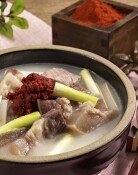Filipina Korean teaches bicultural understanding in class
Filipina Korean teaches bicultural understanding in class
Posted July. 05, 2012 23:30,
A foreigner often grows closer to a country when he or she gets to know a native. This is secret shared by Eileen Park, 39, a Filipina who married a Korean man and lives in Korea.
Park teaches a multi-cultural bag class, in which students learn about different cultures by opening bags containing toys representing the costumes, food, and transportation of Vietnam, Mongolia and the Philippines. The purpose is to increase understanding of other peoples by comparing them with Koreans. Park`s class on her native Philippines has been held every Wednesday from March this year.
She met her husband in the Philippines while she was attending college and he was a member of the Korea International Cooperation Agency, the equivalent of the U.S. Peace Corps. In 2002, she arrived in Korea to learn about the country and studied at the Graduate School of Education of Yonsei University, and married a year later. Park now works as a researcher at the Asian Center for Womens Studies at Ewha Womans University and teaches children part-time.
Its natural for people to be wary of something they`re not used to. When I first saw kimchi, I couldnt eat it because of the smell. Koreans feel uncomfortable with Philippine culture when they encounter it for the first time, she said.
She focuses on explaining why cultures have grown different. A good example is the Aesop fable about the ant and the grasshopper. Koreans think the ant is diligent while Filipinos think the grasshopper is wise because it rests in the hot weather.
Park said jokingly, Youll die if you work like an ant in a hot and humid country like the Philippines.
Now well versed in Korean culture, the Filipina Korean cites common ground of the two cultures to help increase bilateral understanding. For example, she compares the Philippine noodles "pancit" with Korean "japchae (cold mixed vegetables)" and the Philippine loincloth "bahag" with a scarf or a muffler.
There is a big difference in childrens attitude between before and after Park`s class. Most jot down pineapples, bananas, black skin and English-language schools when they think of words related to the Philippines. After the class, however, they write Philippine words such as "kubing (a bamboo musical instrument)," pancit and bahag.
Park says when her students learn more about Philippine culture, they accept it naturally. Ignorance leads to discrimination, she added.
She also urged a change in multi-cultural education in Korea, saying, You have to let children know not what`s different but why it`s become different. Using neutral words with no prejudice is also important.
woohaha@donga.com







